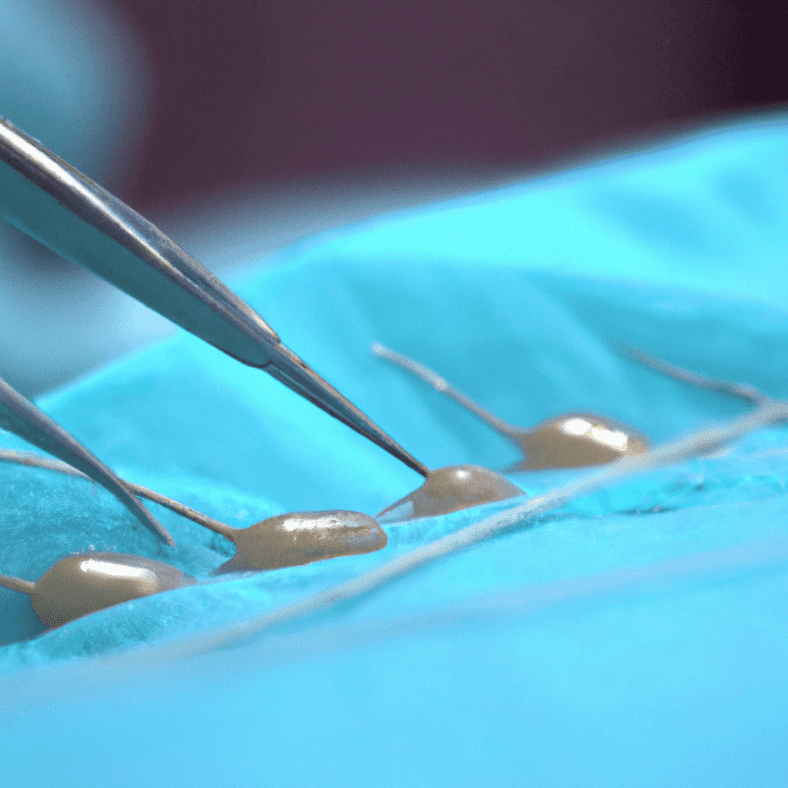-
Table of Contents
- The Superiority of Mohs Surgery in Skin Cancer Treatment
- Key Takeaways
- Unveiling the Superiority of Mohs Surgery
- High Success Rate
- Tissue-Sparing Procedure
- Cost-Effective in the Long Run
- Not Suitable for All
- FAQ Section
- What is Mohs surgery?
- What types of skin cancer can Mohs surgery treat?
- What are the advantages of Mohs surgery?
- Is Mohs surgery painful?
- Is Mohs surgery suitable for all skin cancers?
- Concluding Thoughts
- Key Takeaways Revisited
The Superiority of Mohs Surgery in Skin Cancer Treatment

[youtubomatic_search]
Key Takeaways
- Mohs surgery is a highly effective treatment for skin cancer, boasting a 99% success rate for new cancers and 94% for recurrent ones.
- This procedure is tissue-sparing, meaning it removes less healthy skin compared to other methods.
- Mohs surgery is cost-effective in the long run due to its high cure rate and reduced need for additional treatments.
- It is particularly beneficial for treating cancers in cosmetically and functionally important areas like the face.
- Despite its advantages, Mohs surgery is not suitable for all types of skin cancer and patient conditions.
Unveiling the Superiority of Mohs Surgery
Named after Dr. Frederic Mohs, the pioneer of this technique, Mohs surgery has revolutionized the treatment of skin cancer. It is a precise surgical technique used to treat different types of skin cancer, offering the highest cure rate compared to other treatments. This article delves into the superiority of Mohs surgery in skin cancer treatment.
High Success Rate
One of the most compelling reasons for the superiority of Mohs surgery is its high success rate. According to the Skin Cancer Foundation, Mohs surgery has a 99% success rate for new skin cancers and a 94% success rate for recurrent ones. This is significantly higher than the success rates of other skin cancer treatments, making it a preferred choice for both patients and doctors.
Tissue-Sparing Procedure
Mohs surgery is a tissue-sparing procedure. Unlike other methods that require a larger margin of healthy skin to be removed along with the tumor, Mohs surgery allows surgeons to remove only cancerous tissue. This results in a smaller wound, less scarring, and faster healing time, making it particularly beneficial for treating cancers in cosmetically and functionally important areas like the face.
Cost-Effective in the Long Run
While the upfront cost of Mohs surgery can be higher than other treatments, it is cost-effective in the long run. Due to its high cure rate, there is a reduced need for additional treatments or procedures to manage recurrent cancer. This not only saves patients from the physical and emotional stress of repeated treatments but also reduces overall healthcare costs.
Not Suitable for All
Despite its advantages, it’s important to note that Mohs surgery is not suitable for all types of skin cancer and patient conditions. It is primarily used for treating basal cell carcinoma (BCC) and squamous cell carcinoma (SCC), the two most common types of skin cancer. It is also used for certain rare types of skin cancer. However, it may not be the best option for patients with certain health conditions or for cancers located in certain areas of the body.
FAQ Section
What is Mohs surgery?
Mohs surgery is a precise surgical technique used to treat different types of skin cancer. It involves removing skin cancer layer by layer and examining the tissue under a microscope until healthy, cancer-free tissue around the tumor is reached.
What types of skin cancer can Mohs surgery treat?
Mohs surgery is primarily used for treating basal cell carcinoma (BCC) and squamous cell carcinoma (SCC), the two most common types of skin cancer. It is also used for certain rare types of skin cancer.
What are the advantages of Mohs surgery?
Mohs surgery offers the highest cure rate compared to other treatments, is tissue-sparing, and is cost-effective in the long run due to its high cure rate and reduced need for additional treatments.
Is Mohs surgery painful?
Mohs surgery is typically performed under local anesthesia, so the patient does not feel pain during the procedure. Post-operative discomfort can be managed with over-the-counter or prescription medications.
Is Mohs surgery suitable for all skin cancers?
No, Mohs surgery is not suitable for all types of skin cancer or for cancers located in certain areas of the body. It may also not be the best option for patients with certain health conditions.
Concluding Thoughts
In conclusion, Mohs surgery stands out as a superior treatment for skin cancer due to its high success rate, tissue-sparing nature, and cost-effectiveness in the long run. However, it’s important to remember that it’s not suitable for all types of skin cancer or patient conditions. As with any medical procedure, it’s crucial to discuss with a healthcare provider to determine the best treatment option.
[youtubomatic_search]
Key Takeaways Revisited
- Mohs surgery offers a high success rate, making it a preferred choice for skin cancer treatment.
- It is a tissue-sparing procedure, resulting in less scarring and faster healing time.
- Despite higher upfront costs, Mohs surgery is cost-effective in the long run due to its high cure rate and reduced need for additional treatments.
- It is particularly beneficial for treating cancers in cosmetically and functionally important areas.
- Mohs surgery is not suitable for all types of skin cancer and patient conditions.

Leave a Reply